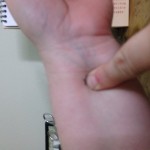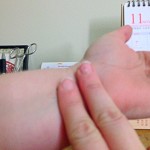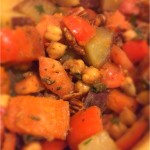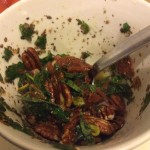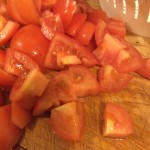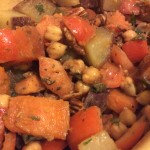Health benefits of Gratitude in a
consumer driven world
On this eve of Christmas, I
can’t help but get excited about whats to come tomorrow, I really love the time
to eat, drink and be merry. Spending time chilling out with the family and
those lazy hot days of the holiday period to come.
However our enjoyment of the
festivities can be easily overshadowed by the dark side of our consumer driven
society. It’s within this context that I want to take a moment in the holiday
season to talk about gratitude and the benefits it can have for our mind, body
and soul.
One definition of consumerism
I like is “The concept that an ever-expanding consumption of goods is
advantageous to the economy.”(1)
Don’t get me wrong, I’m not
opposed to consumerism, it’s what makes our world go around. As a retail shop
owner, I rely on consumerism to drive my business. Buying things, getting what
you want, and enjoying the journey of life which is often made better by our
purchases is all good. But is that all life is about?
The dark side to consumerism
breeds people who walk around like “entitled customers” Consumerism says “The customer is always right” (which I DO NOT
agree with). It’s such a philosophy drilled into us from a young age in the
western world that we must have everything perfect, not defective in any way –
not broken but “brand new”, untainted, regardless of if the function is intact.
I had my retail shop in a
café strip for a number of years and the number one thing that would drive me
nuts was the kids of customers who would come in winging at their parents
“Muuuum, I want a babychino, you said we were coming out to get a babychino…”
and so on. The poor parent just wanted to look around at some clothes for
herself when this little kid could only think of their own babychino time. Now
that’s forgivable for a kid, but what kind of adult are they going to be? If
that was me, as a kid, I would have got a smack bottom for throwing a tantrum
and a forced sleep in the afternoon! Thank God for a mum and dad who taught
good lessons.
So where does gratitude fit
in? Nothing wrong with getting what you want, what you paid for, what your entitled
to, but when life is all about me, or
all about consuming and getting, we can miss out on the happiness that comes
with the thing we were striving so hard to get in the first place.
The biggest downsides from consumer culture is:
o
It emphasises
happiness from material things
o
It’s about comparisons
& envy rather than appreciation.
o
Satisfaction
doesn’t necessarily come with purchase!
The problem with consumer
culture is that Satisfaction inevitably
decreases. Then you must acquire more, or better to get the same
satisfaction again. Conversely, in a Gratitude culture satisfaction can stay
the same or increase regardless of things I acquire or purchases made.
GRATTITUDE
Sometimes we are bombarded by
our first world problems that we don’t obtain the happiness that an attitude of
gratitude would bring if we could only see the wood for the trees!
Essentially gratitude
is about being thankful, appreciative and a bent toward kindness.
Having a culture of
gratitude is not something that comes easy for us in our consumer-centric
world. We have to work at being thankful.
Tell yourself it’s still ok to strive for better but at the same time, be
thankful. I like to think that
gratitude culture is a kind of paradox where you are not about to settle for second best, although your still incredibly
happy with what you have. It’s all about perspective.
How you look at things, even
situations that might be terrible ones, can help cultivate the gratitude that
is so good for our mind body and soul.
THERE ARE SOME GREAT HEALTH BENEFITS OF GRATITUDE:
· Gratitude
influences our sleep
· Research shows people who have a culture of gratitude
in their world have a better nights sleep. (2)
Studies have been done using interventions like getting people to write down 3 things that they are grateful for before going to bed. One way to do this might be to create a Thanks or Gratitude Journal. This is where you write down what you are grateful for regularly. It could be one thing every day or 3 things every week. It should be something you work into your routine. Doing it last thing before you head hits the pillow is the best time to maximise the benefits of gratitude for a good nights sleep.
· Gratitude
helps our body function better improves recovery from illness
In a recent study on
heart failure patients (2015), researchers reported “ In sum, we report that
gratitude and spiritual well-being are related to better mood and sleep, less
fatigue, and more self-efficacy, and that gratitude fully or partially mediates
the beneficial effects of spiritual wellbeing on these endpoints. Efforts to
increase gratitude may be a treatment for improving
well-being in HF patients’ lives and be of potential
clinical value.” (3)
· Gratitude
improves self-esteem.
Even if you already
have healthy self esteem, there is nothing wrong with a boost. Generally when
you start to compare yourself with others, dwelling on what you think you
should have or deserve, what other people in similar positions to you have –
self esteem decreases. Studies have shown gratefulness practices increase self
esteem as people make less comparisons, and are more able to appreciate others
accomplishments.
In fact, self esteem
is something that is closely studied in the sports psychology field. It’s well
known athletes have a chance of winning or performance is positively correlated
with levels of self esteem. A 2014
study published in the Journal of Applied Sport Psychology found
that gratitude increased athlete’s self-esteem (4).
I encourage you to take a
moment this holiday season to appreciate what you do have, and how much you
have achieved in 2015 rather than just skipping on into the new year without
pause.
3 EASY STEPS to cultivate a culture of GRATEFULNESS in your world:
1)
Pause
Make time, Make room, make
space – keep a journal, a note app on you phone, make an appointment with
yourself. Make time in the car, or late at night or some regular time.
Maybe pause yourself when you complain
about the things you think you deserve, and switch those thoughts to
gratitude about the things you already have.
2) Think
Find something good to be
thankful for RIGHT NOW. TODAY
“I appreciate…”
“(insert name) Thank you
for…”
Having something that is greater than us, our world, beyond us lifts our focus from our me, me, me world
to something bigger. It might be your faith or spiritual belief that helps you
achieve this, but it also is effective to take your thoughts to appreciating
others.
Have you ever received a note
of appreciation from someone? It might have been something minor you did, but
it actualy makes a big difference to them.
As a creator of products I’m
constantly putting my art “out there” into the world. Now it essentially doesn’t
really bother me if one person says they hate it or another says they love it…this
happens all the time and If I listened to the opinions of the masses I wouldn’t
put anything out there at all!
A few weeks ago I got an email
from a customer who bought one of my products at a retail store, she lived in
the country and wanted to purchase them again. She raved on about how she liked
the product and at that moment in a day where 99.9% of my emails were stress,
bills and jobs to do, that made my day.
It’s not common for people to
go out of their way and express gratitude or appreciation, so when you do, you
should know it will really make a difference to that person.
3) Action
Thoughts alone are not very
productive, you have to take some kind of action to get the full benefit of
cultivating a culture of gratitude in your world.
It doesn’t have to be
complicated, or longwinded - it might be a thought you take the time and space
to meditate on, write down in your Thanks Journal, saying a prayer, saying thanks
or appreciation to someone. There is power in verbalising and saying it aloud.
ASK YOURSELF “WHAT CAN I BE
GRATEFUL FOR IN MY LIFE RIGHT NOW?”
ABOUT THE AUTHOR:
Marie Hopkinson is a Chinese Medicine Practitioner, Practicing from her clinic in North Perth, WA- METRO HEALTH AND MEDICINE. Marie can be consulted for appointments, while in-person is preferred, Email /phone consultations can be arranged. Marie has been practicing since 2000, completing initial 3-year course in Chinese Medicine at the Perth Academy of Natural Therapies in WA. Marie has been to China for additional training in the Hangzhou Traditional Chinese Medicine Hospital (Hangzhou Shi Zhong Yi Yuan) twice as well as completing a Master of International Health at Curtin University in 2006. Marie is passionate about the effective practice and understanding of Chinese Medicine and enjoys the opportunity to educate patients about the benefits of self-help aspects such as diet therapy, as well as teaching Chinese Medicine at the Endeavour College of Natural Health.
For more info about booking an appointment with Marie CLICK HERE.
REFERENCES:
1. Dictionary.com.
2015 [cited 2015 12/12/15]. Available from: http://dictionary.reference.com/browse/consumerism.
2. Wood AM, Joseph S, Lloyd J, Atkins S.
Original article: Gratitude influences sleep through the mechanism of pre-sleep
cognitions. Journal of Psychosomatic Research. 2009;66:43-8.
3. Mills PJ, Wilson K, Punga MA, Chinh K,
Pruitt C, Greenberg B, et al. The Role of Gratitude in Well-being in
Asymptomatic Heart Failure Patients. Integrative Medicine: A Clinician's
Journal. 2015;14(1):51- 1p.
4. Chen LH, Wu C-H. Gratitude Enhances
Change in Athletes’ Self-Esteem: The Moderating Role of Trust in Coach. Journal
of Applied Sport Psychology. 2014;26(3):349-62 14p.

